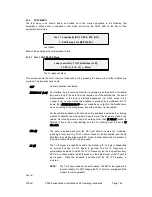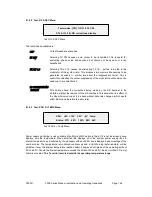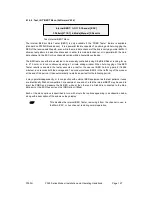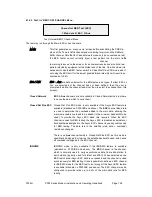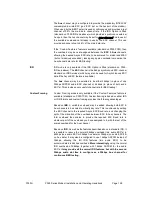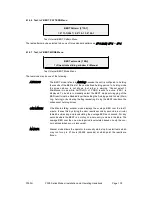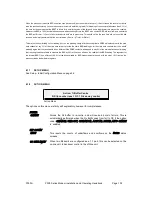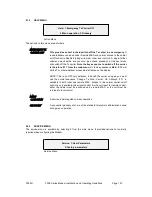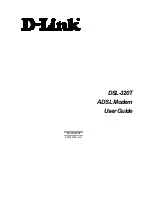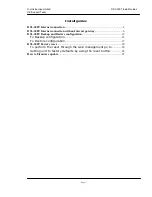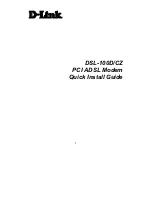
P300H
P300 Series Modem Installation and Operating Handbook
Page 137
by allocating more or less of the overhead to the ESC). When the ESC Baud
rate is set too high, a warning will be displayed if the overhead cannot provide
the requested ESC rate.
Ó×Ò ÑñØ
The
overhead varies
to provide the ESC Baud rate
set on the ESC menus.
The following two examples explain typical scenarios:
At 2048 kbps with a 9600 Baud ESC channel the overhead can reduce to
less than 1% whilst still maintaining the IBS/SMS benefits (namely a factor
of three error rate improvement due to using the IBS/SMS scrambler
instead of the V.35 scrambler, the ESC channel and the backward alarm
facility).
The operator can set the ESC channel Baud rate to 9600 Baud even at low
data rates. For example at 64kbps the high rate ESC would normally
provide a 2400 Baud channel, but if 9600 Baud is set in Minimum overhead
mode, the overhead will scale to provide it. The practical ESC rate limit is
70% of the data rate, ie you can have a 9600 Baud ESC channel down to a
data rate of 11kbps !
The final satellite data rate including overhead can be displayed on the
×ÒÚÑ
,
Ê×ÛÉ ÝÑÒÚ×Ù
,
ÌÈñÎÈ
screens.
NOTE
: This is obvious, but it is stated here as a reminder. As the exact
overhead format is calculated based on your ESC requirement, for two
Modems to calculate the same overhead usage and therefore interwork, the
following parameters must be the same at both ends of the link:
Main Data Rate.
ESC async character format (bits / parity) & Baud rate.
Proportion of overhead assigned to ESC.
Baseband mode (ie continuous or Drop/Insert)
7.1.3
Change, Tx/Rx, Service, Custom, IDR Menu
If
×ÜÎ
is select from the menu Tx/Rx, Service, Custom screen this leads to the following question:
Framing based on: [?]
1=Low rate format (T1/E1) 2=High rate format (T2/E2)
Change, Tx/Rx, Service, Custom, IDR, Format Menu
The frame format definition for IDR operation varies with the data rate. For rates of 1544 or 2048 kbps
(T1/E1) one format is defined, and for rates of 6312 and 8448kbps (T2/E2) another is defined (there is
even a third definition for rates > 10Mbps). In
ÝËÍÌÑÓô ×ÜÎ
mode, you have a free choice of format
whatever the data rate and note that IDR operation is not limited to T1/E1 rates, but can be used at any
data rate, (even down to 64kbps, although INTELSAT define that IBS framing should be used on IDR
carriers below 1544kbps).
ÔÑÉ
The 12 bit overhead defined for T1/E1 operation in IESS 308 is used.
Ø×ÙØ
The 4 bit overhead on each of three subframes defined for T2/E2 operation is
used.
Whichever format is selected, the following prompt appears:


